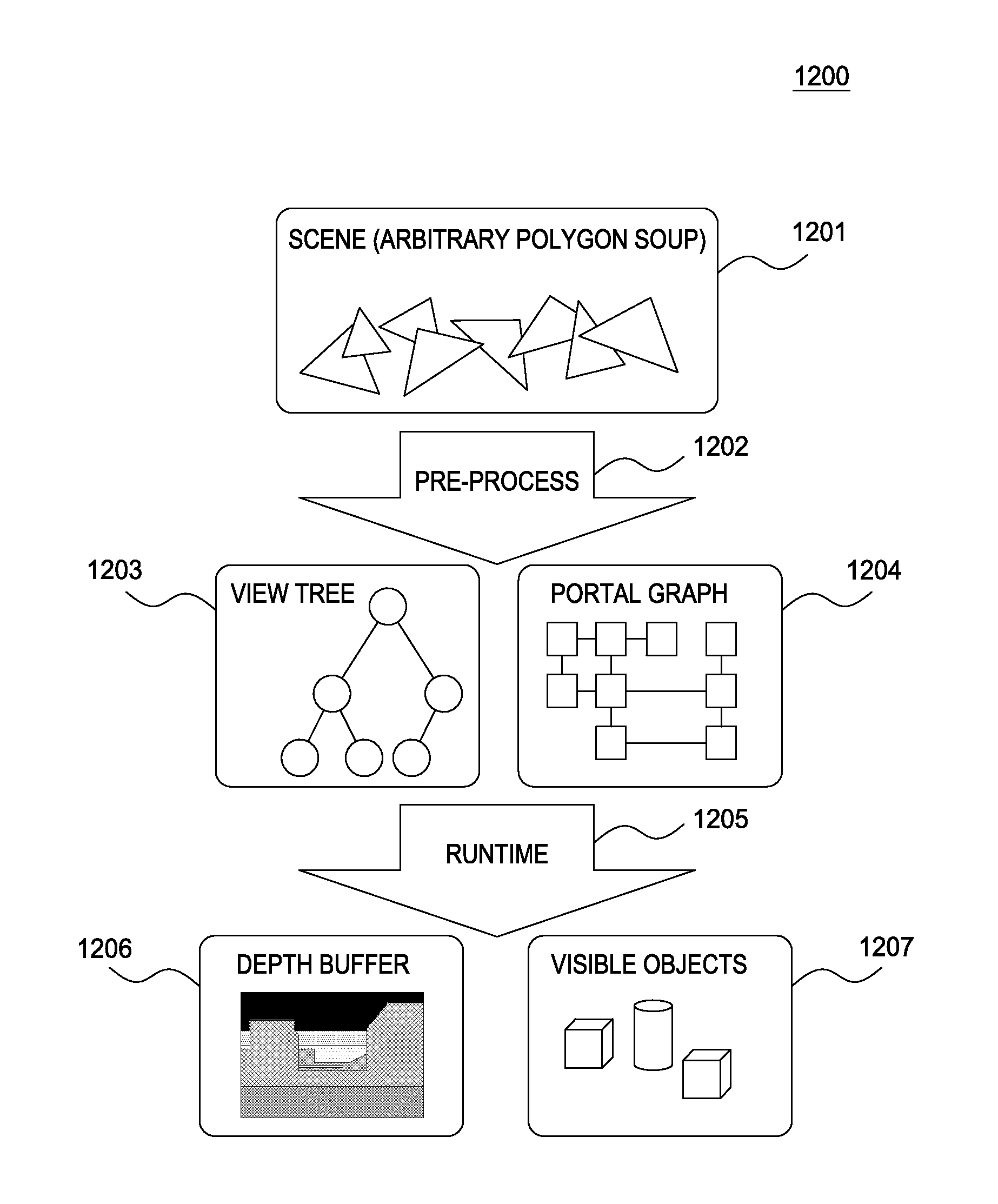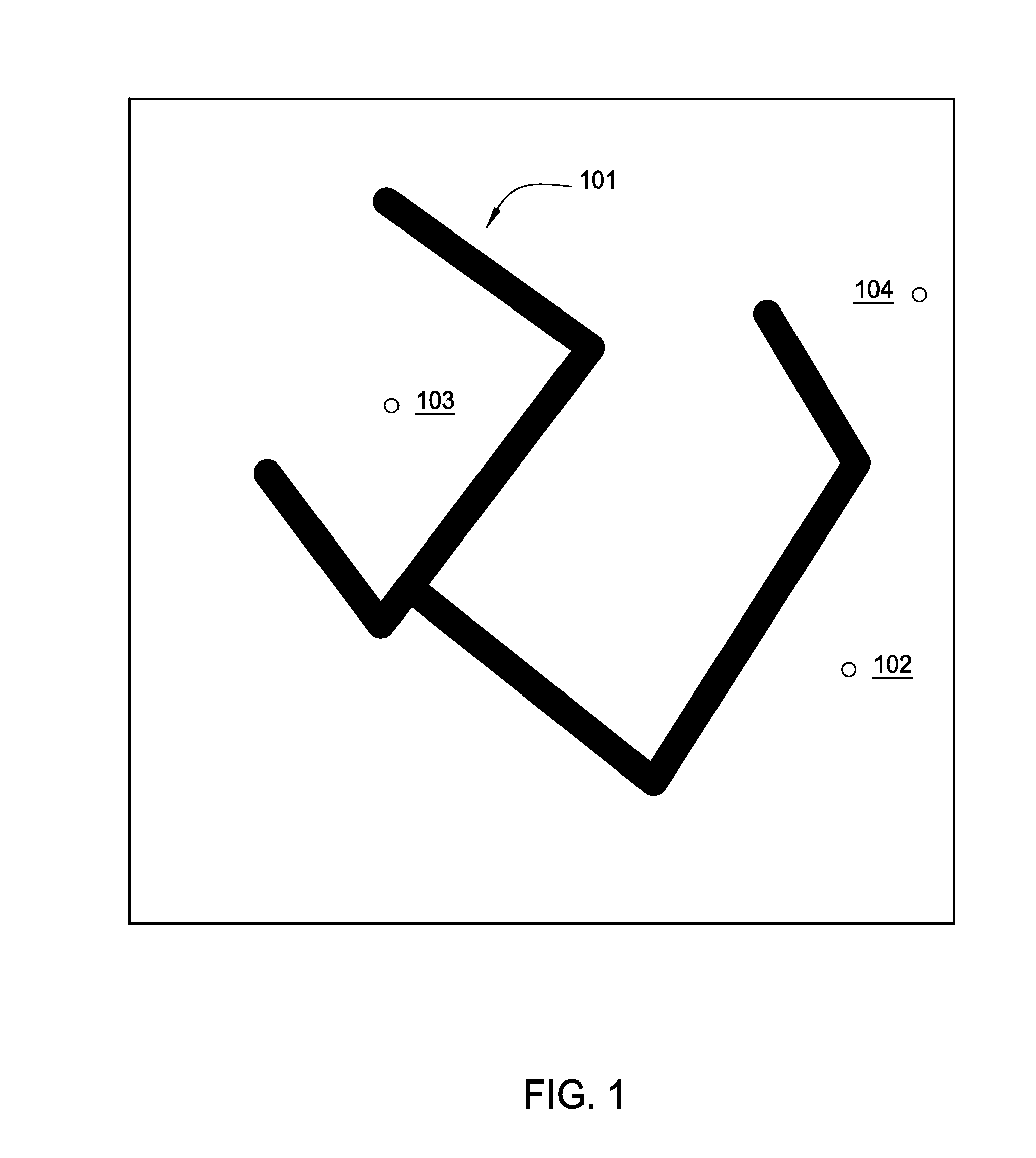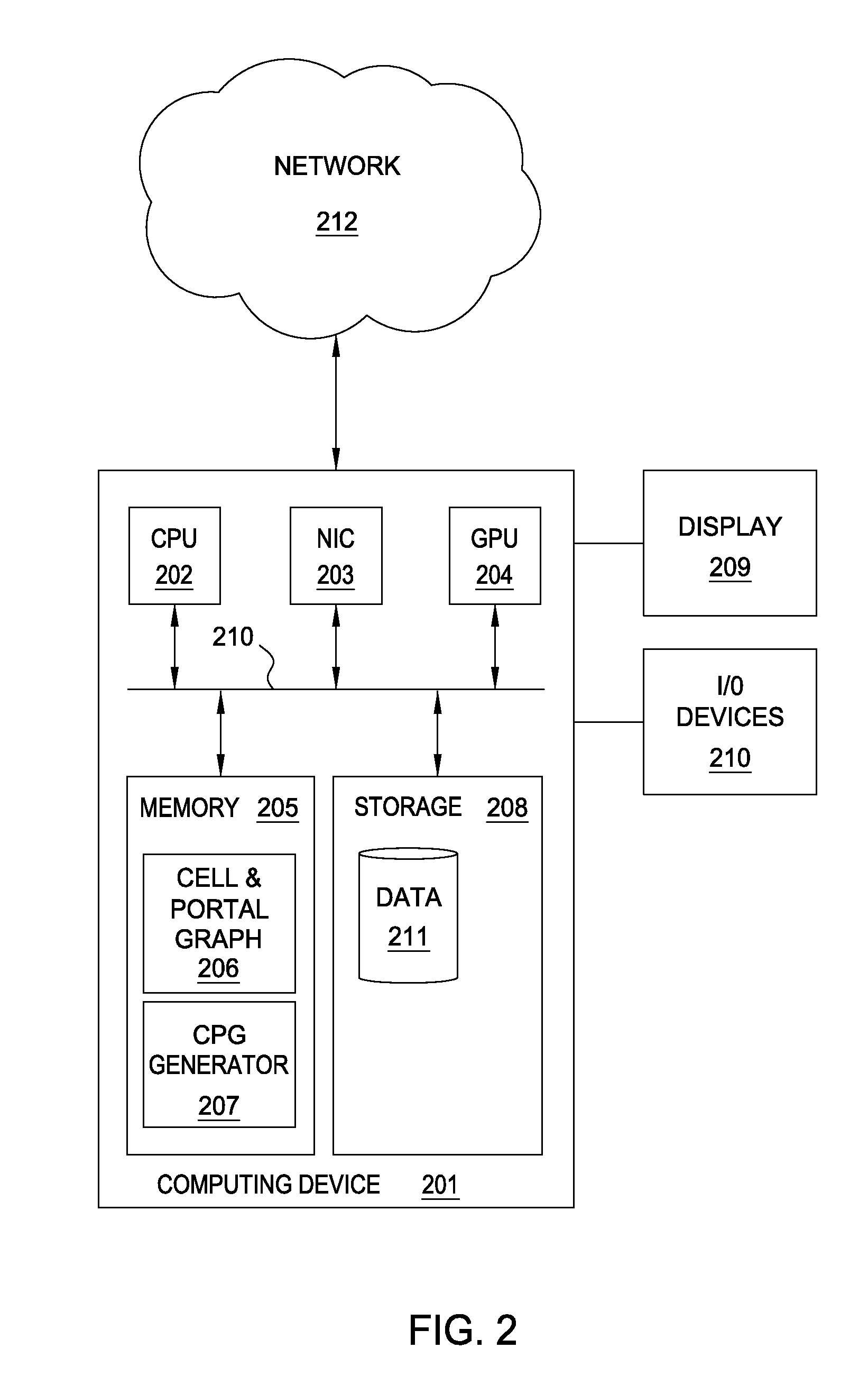Conservative cell and portal graph generation
a cell and portal graph technology, applied in the field of building a cell and portal graph, can solve the problems of requiring a great deal of manual labor for a programmer, requiring a great deal of culling techniques, and more resource intensive rendering operations
- Summary
- Abstract
- Description
- Claims
- Application Information
AI Technical Summary
Benefits of technology
Problems solved by technology
Method used
Image
Examples
Embodiment Construction
[0025]Embodiments presented herein provide techniques for efficiently creating a cell and portal graph for a corresponding set of graphics data. A cell and portal graph provides a data structure used to encode the visibility of a scene. Each cell corresponds to a number of pixels in two dimensions or three dimensions, referred to as a voxel. Voxels that intersect geometry of the graphics data are referred to as being solid (i.e., visibility is occluded by the geometry) or empty (i.e., visibility is not occluded by the geometry). Neighboring cells are tested for visibility and grouped together based on the ability to see the cells within the cell group. However, for a complex scene, a cell and portal graph can become very large, making then inadequate for some rendering processes.
[0026]One embodiment provides a method to build a cell and portal graph. The method may be executed early in the rendering pipeline to build the cell and portal graph. The method reduces very large data stru...
PUM
 Login to View More
Login to View More Abstract
Description
Claims
Application Information
 Login to View More
Login to View More - R&D
- Intellectual Property
- Life Sciences
- Materials
- Tech Scout
- Unparalleled Data Quality
- Higher Quality Content
- 60% Fewer Hallucinations
Browse by: Latest US Patents, China's latest patents, Technical Efficacy Thesaurus, Application Domain, Technology Topic, Popular Technical Reports.
© 2025 PatSnap. All rights reserved.Legal|Privacy policy|Modern Slavery Act Transparency Statement|Sitemap|About US| Contact US: help@patsnap.com



